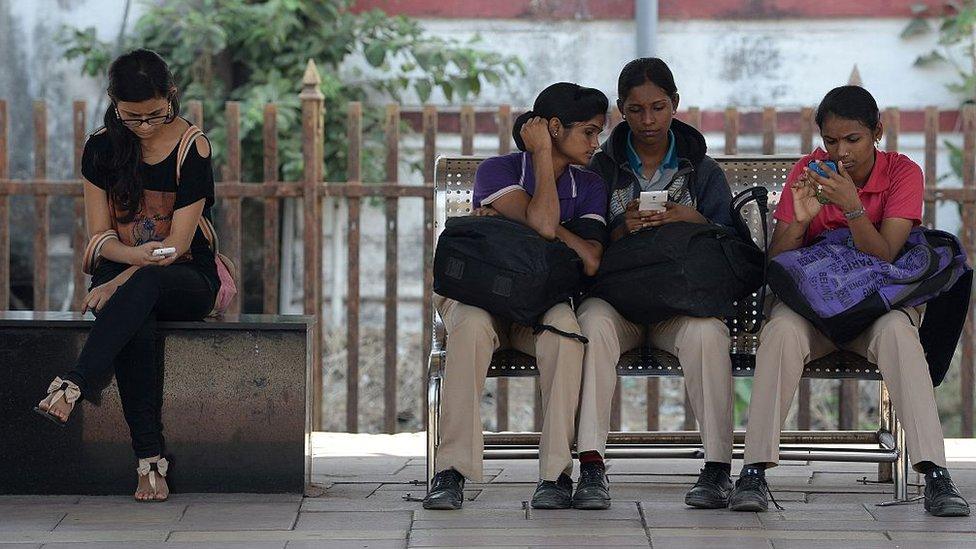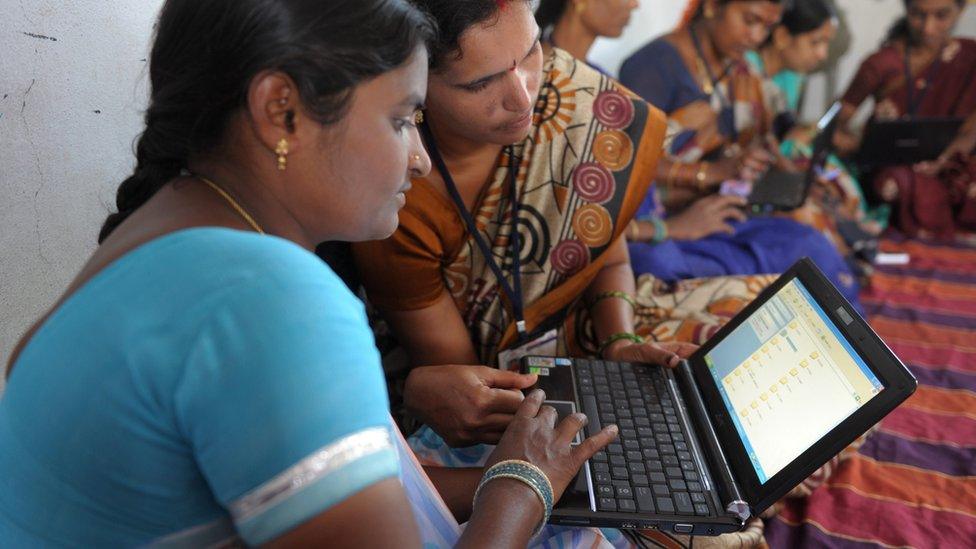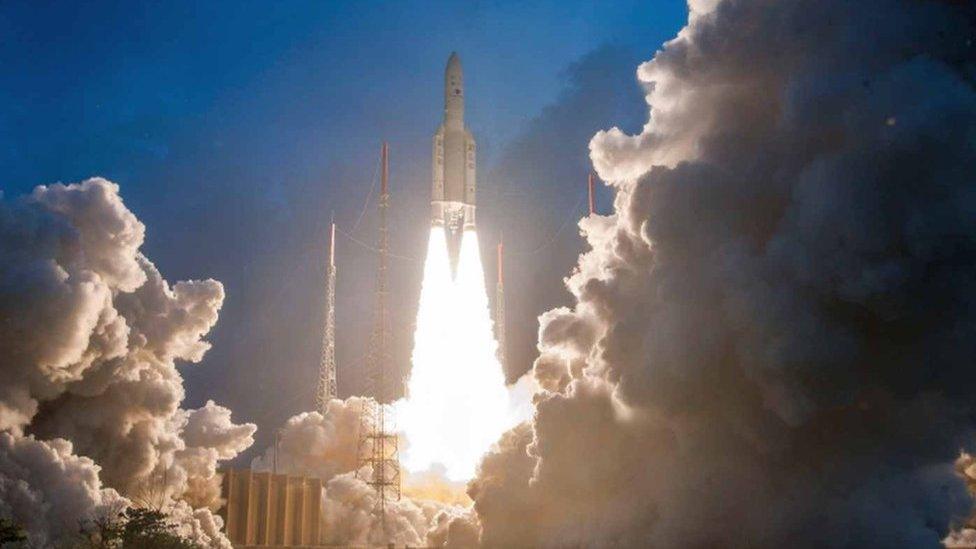India election 2019: When will broadband reach all villages?
- Published

India's Prime Minister Narendra Modi wants more than a billion Indians connected to the internet - and his BJP government is counting on a project taking cheap high-speed broadband to rural areas to achieve this.
The project, to build a nationwide optical fibre network, was launched in 2014 and is the flagship scheme of the government's Digital India programme.
In the run-up to the Indian election, which gets under way on 11 April, BBC Reality Check is examining claims and pledges made by the main political parties.
So has the project been a success?

Pledge: Indian Communications Minister Manoj Sinha promised to provide every village in the country with high speed broadband and that this would be achieved by March 2019.
Verdict: The project to set up digital infrastructure in rural India has made substantial headway but has so far achieved less than 50% of its intended target.


An ambitious plan
India has the second highest number of internet users in the world but the penetration is quite low for its size and population.
The BharatNet scheme aims to connect more than 600,000 villages in India with a minimum broadband speed of 100Mbps.
It would enable local service providers to offer internet access to the local population, primarily through mobile phones and other portable devices.
India's telecom regulator says there were 560 million internet connections in India in September last year.

But the pace of internet adoption is lower in rural areas, where most Indians live.
What's been achieved so far?
The government's overall target is to connect 250,000 village councils covering more than 600,000 individual villages across the country.
The work of laying cables and installing equipment to connect 100,000 of them was finally completed in December 2017 after significant delays.
This milestone was hailed a success but there were also critical voices, especially from government opponents about whether the cables were actually operational.

The next phase, to connect the remaining councils by March 2019, has been under way for a year now.
In total, as of the end of January this year, official data shows optical fibre cables have been laid in 123,489 village councils - and equipment installed in 116,876 of them.
There is also a plan to install wi-fi hotspots in more than 100,000 council areas - but as of January these were operational in only 12,500 of them.
Old plan, new name
It has been an ambition of successive governments to connect all India to the internet but plans have hit many roadblocks.
BharatNet was first conceived in 2011 by the then Congress government as the National Optical Fibre Network but did not make much headway in its pilot phase.
A parliamentary committee said the project had been affected by "inadequate planning and design" from 2011 to 2014.
When the BJP came to power in 2014, it took over the project and has pushed ahead with national broadband coverage.
And in January last year, the government said it would complete the work ahead of the stipulated deadline of March 2019.
Has the deadline been met?
There was impressive progress made in 2016 and 2017 but since then the pace has slowed.
In January this year, the agency executing BharatNet said 116,411 village councils were "service ready".
This means that provisions for ready-to-use connectivity have been made.

But not all "service ready" village councils have proper connections, says Osama Manzar, from the non-governmental Digital Empowerment Foundation (DEF).
DEF found that only 50 of 269 "service ready" councils, external inspected across 13 states in 2018 had the required device and internet connection set-up.
And only 31 of them had "functional", but slow, internet connections.
Mr Manzar notes that this is problematic considering "the public welfare distribution and the financial sectors rely heavily on digital infrastructure today".
Another report, citing an internal official memo, said most of the councils had non-functioning networks or faulty equipment., external
Next steps
BharatNet has faced also difficulties with electricity supply, theft, low-quality cables and poorly maintained equipment.
And these delays come as India aims to provide broadband in all households and move to 5G networks by 2022.
An official source defended BharatNet as a large-scale infrastructure project tackling difficult sites and not a service scheme, saying it was natural to see delays between set-up and use.



- Published5 December 2018

- Published27 May 2018